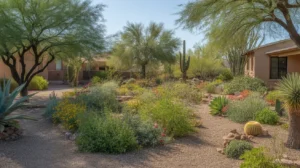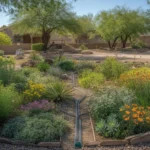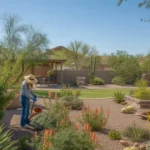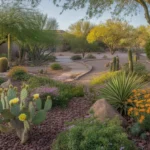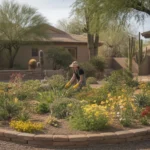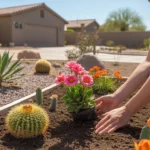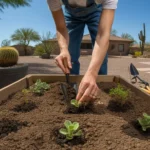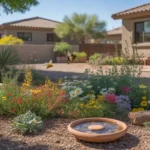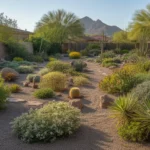As the weather warms and spring arrives in the Southeast Valley, it’s the perfect time to revitalize your garden and create a lush oasis in the desert. But where do you start? With some careful planning and the right approach, you can transform your yard into a thriving, colorful landscape this spring. Here’s what local gardening experts recommend.
Assess Your Space and Make a Plan
Before diving into planting, take stock of your yard and envision your ideal garden. Consider factors like sun exposure, soil type, available space, and your overall landscaping style. Do you prefer a formal look or a more natural, desert-friendly design?
“Spend some time observing your yard at different times of day to see how the light shifts,” suggests one Queen Creek landscaper. “This will help you choose the right plants for each area and avoid putting sun-loving plants in too much shade, or vice versa.”
Sketch out a rough plan for your garden beds, noting where you want to place different types of plants, trees, and any hardscaping elements like paths or borders. Having a roadmap will make the planting process much smoother.
Prepare Your Soil for Spring Planting
Healthy soil is the foundation of a thriving garden. Southeast Valley soil tends to be heavy in clay and low in organic matter, which can make it challenging for plants to flourish. Spend some time amending and aerating your soil before planting for the best results.
“Mix in generous amounts of compost, aged manure, or other organic matter to improve soil texture and fertility,” recommends a Gilbert gardening expert. “This will help with drainage, root development, and overall plant health.”
If you have compacted soil, use a garden fork or tiller to loosen it up and break up any clumps. This allows air, water, and nutrients to penetrate more easily. Aim for a crumbly, well-draining consistency.
Choose the Right Plants for the Desert Climate
When selecting plants for your Southeast Valley garden, it’s crucial to choose varieties that are well-adapted to the hot, arid climate. Native and desert-friendly plants are your best bet, as they require less water and maintenance once established.
“Some of my favorite spring plants for the area include penstemon, desert marigold, globe mallow, and chuparosa,” says a Chandler landscaper. “They offer beautiful blooms, attract pollinators, and can handle the heat with minimal fuss.”
Other great options include succulents like agave and aloe, cacti, and hardy perennials like blackfoot daisy and damianita. Mix in some desert-adapted shrubs and trees for structure and shade, such as palo verde, mesquite, and desert willow.
Follow a Planting Calendar for Optimal Timing
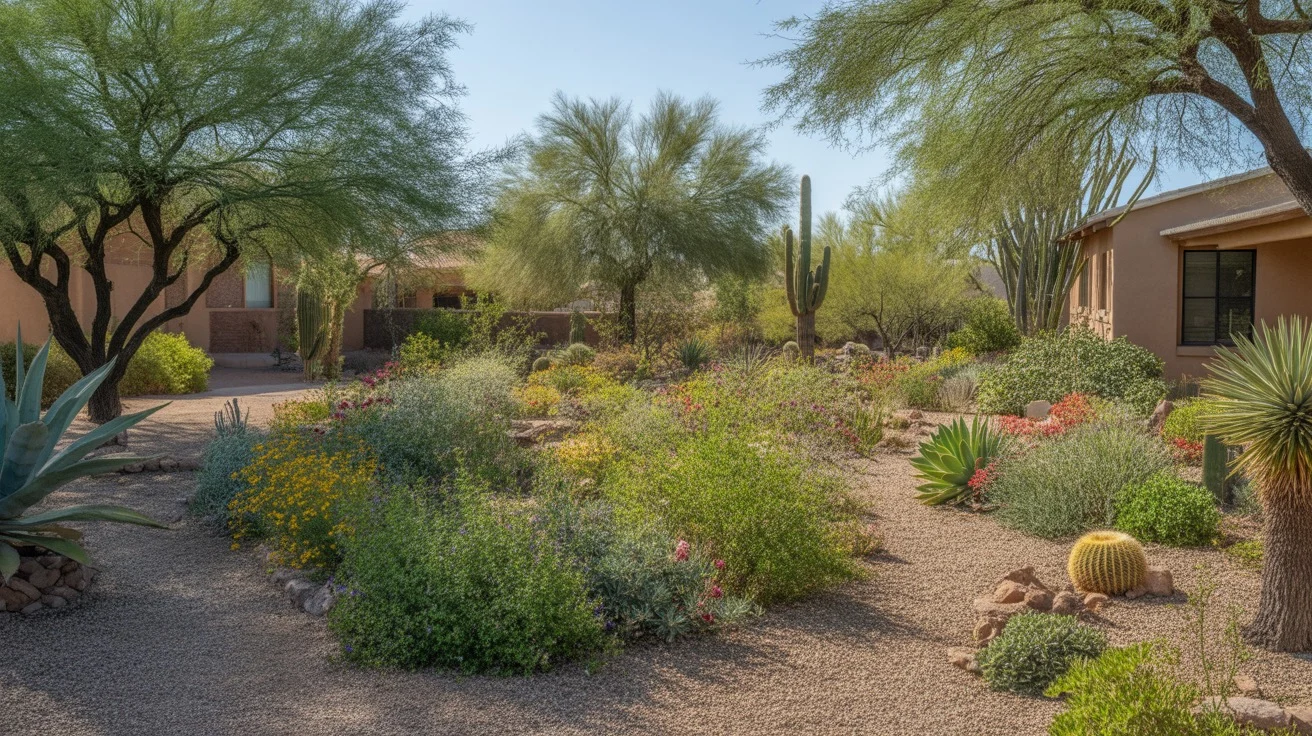
Timing is everything when it comes to spring planting in the Southeast Valley. Many cool-season annuals and veggies should be planted in late winter or early spring, while warm-season varieties do best when planted after the last frost, usually in March or April.
“Consult a planting calendar specific to the low desert region to ensure you’re putting things in at the right time,” advises a San Tan Valley garden center owner. “This will give your plants the best chance of thriving and avoid stress from extreme temperatures.”
Some key planting windows:
- Late January to February: Cool-season annuals, wildflower seeds, bare-root roses
- February to March: Trees, shrubs, perennials, cool-season veggies
- Late March to April: Warm-season annuals, cacti, succulents, warm-season veggies
Design with Watering in Mind
Water is a precious resource in the desert, so it’s important to design your garden with efficient irrigation in mind. Group plants with similar water needs together, and consider installing a drip system or soaker hoses to deliver water directly to the roots.
“Hydrozoning is a smart strategy for desert landscaping,” explains a Florence gardener. “Place high-water plants closer to the house or in oasis zones, and transition to lower-water plants farther out. This maximizes your irrigation efficiency.”
Incorporate water-wise features like rain gardens, swales, and berms to capture and direct rainwater to your plants. Mulch heavily around plants to reduce evaporation and moderate soil temperatures.
Provide TLC and Ongoing Maintenance
Once your spring garden is planted, regular care will keep it looking its best. Water deeply and infrequently to encourage deep root growth. Prune and deadhead spent blooms to promote healthy new growth. Keep an eye out for pests and address any issues promptly.
“One of the keys to a successful desert garden is embracing a little wildness,” shares a San Tan Valley landscaper. “Don’t aim for perfection – let plants grow into their natural shapes, and appreciate the seasonal changes. With the right care, your spring garden will reward you with beauty year after year.”
By starting with a plan, preparing your soil, choosing climate-appropriate plants, and following a smart care routine, you can create a lush and vibrant spring garden, even in the challenging conditions of the Southeast Valley. Embrace the desert aesthetic, be water-wise, and enjoy the process of transforming your yard into a blooming oasis this season.

